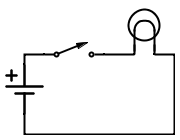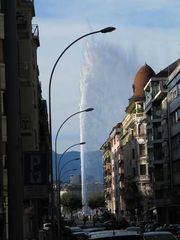Electric circuits, volts amps watts and ohms: Difference between revisions
No edit summary |
|||
| Line 12: | Line 12: | ||
==Volts - the pressure is on== | ==Volts - the pressure is on== | ||
[[File:Img_1750a.jpg|180px|thumb|left|High pressure - Jet d'Deau, Geneva.]] | |||
Low pressure - pic: thumb over inverted bottle of water? | Low pressure - pic: thumb over inverted bottle of water? | ||
High pressure - pic: | High pressure - pic: Geneva Jet d'Eau. | ||
==Amps - go with the flow== | ==Amps - go with the flow== | ||
Revision as of 09:43, 23 November 2014
Basic electrical theory every Restarter should know.
(This page is work in progress - comments and update suggestions to the Discussion page only for now please.)
Summary
A knowledge of basic electrical theory is essential for anything more than purely mechanical repairs, and will greatly help in diagnosing faults and working safely.
Electrical Circuits - doing the rounds
Positive and negative charge. Opposite charges attract, like charges repel (pic), hence an open circuit results in a pile-up. A simple circuit - battery, switch, bulb (pic)
Volts - the pressure is on
Low pressure - pic: thumb over inverted bottle of water?
High pressure - pic: Geneva Jet d'Eau.
Amps - go with the flow
Small flow - pic: dripping tap?
Large flow - pic: Amazon?
Watts - feel the power
Volts x Amps - large voltage or large current.
Illustrations?
Ohms - resistance isn't futile
Volts per amp
Illustration?
Safety
Consider whether your page should include a specific section on safety, if for example it deals with mains-powered equipment or high voltages, or if special care is required in handling hot or sharp tools, or hazardous substances.
References
External links
- External links as bullet points


